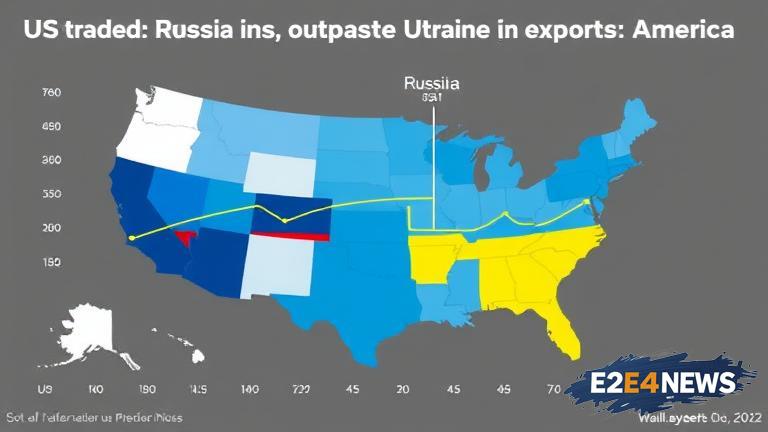The United States has been found to import nearly three times more goods from Russia than it does from Ukraine, according to recent trade data. This revelation comes as a surprise, given the ongoing geopolitical tensions between the US and Russia. The US has been a vocal supporter of Ukraine in its conflict with Russia, and has imposed numerous sanctions on Russian entities. However, it appears that trade between the two nations remains robust. In 2022, the US imported approximately $13.8 billion worth of goods from Russia, compared to just $4.7 billion from Ukraine. The majority of Russian exports to the US consist of energy products, such as crude oil and natural gas. The US is also a significant importer of Russian minerals, including palladium and rhodium. On the other hand, Ukraine’s exports to the US are primarily composed of agricultural products, such as corn and wheat. The trade imbalance between the two nations is likely due to the fact that Russia has a more diversified economy, with a strong energy sector. Ukraine, on the other hand, has struggled to develop its economy, due in part to the ongoing conflict with Russian-backed separatists. Despite the trade disparity, the US remains a strong supporter of Ukraine, and has provided significant economic and military aid to the country. The US has also imposed sanctions on numerous Russian individuals and entities, in response to Russia’s actions in Ukraine. However, it appears that these sanctions have had little impact on trade between the two nations. The US is not alone in its trade with Russia, as many European countries also import significant amounts of Russian energy products. The EU has also imposed sanctions on Russia, but has been reluctant to cut off all trade ties. The ongoing trade dynamics between the US, Russia, and Ukraine are complex and multifaceted. While the US has imposed sanctions on Russia, it continues to import significant amounts of Russian goods. At the same time, the US is providing economic and military aid to Ukraine, in an effort to support the country’s economy and defense. The situation is further complicated by the fact that Russia is a major player in the global energy market, and the US is heavily reliant on imported energy products. As the conflict in Ukraine continues, it is likely that trade dynamics between the US, Russia, and Ukraine will remain a major point of contention. The US will need to balance its desire to support Ukraine with its need to import energy products from Russia. Meanwhile, Ukraine will need to continue to develop its economy, in order to reduce its reliance on foreign aid. The situation is a complex web of geopolitical and economic interests, and it is unclear how it will ultimately be resolved. The US, Russia, and Ukraine will all need to navigate this complex landscape, in order to achieve their respective goals. The trade dynamics between the three nations will likely continue to evolve, as the conflict in Ukraine continues. The US will need to carefully consider its trade policies, in order to balance its competing interests. The situation is a challenging one, but it also presents opportunities for growth and development. As the US, Russia, and Ukraine navigate this complex landscape, they will need to be mindful of the potential risks and benefits of their actions. The outcome is far from certain, but one thing is clear: the trade dynamics between the US, Russia, and Ukraine will continue to be a major point of contention in the years to come.
